All Posts > Fruiting Plants > Perennials > Plant Profiles
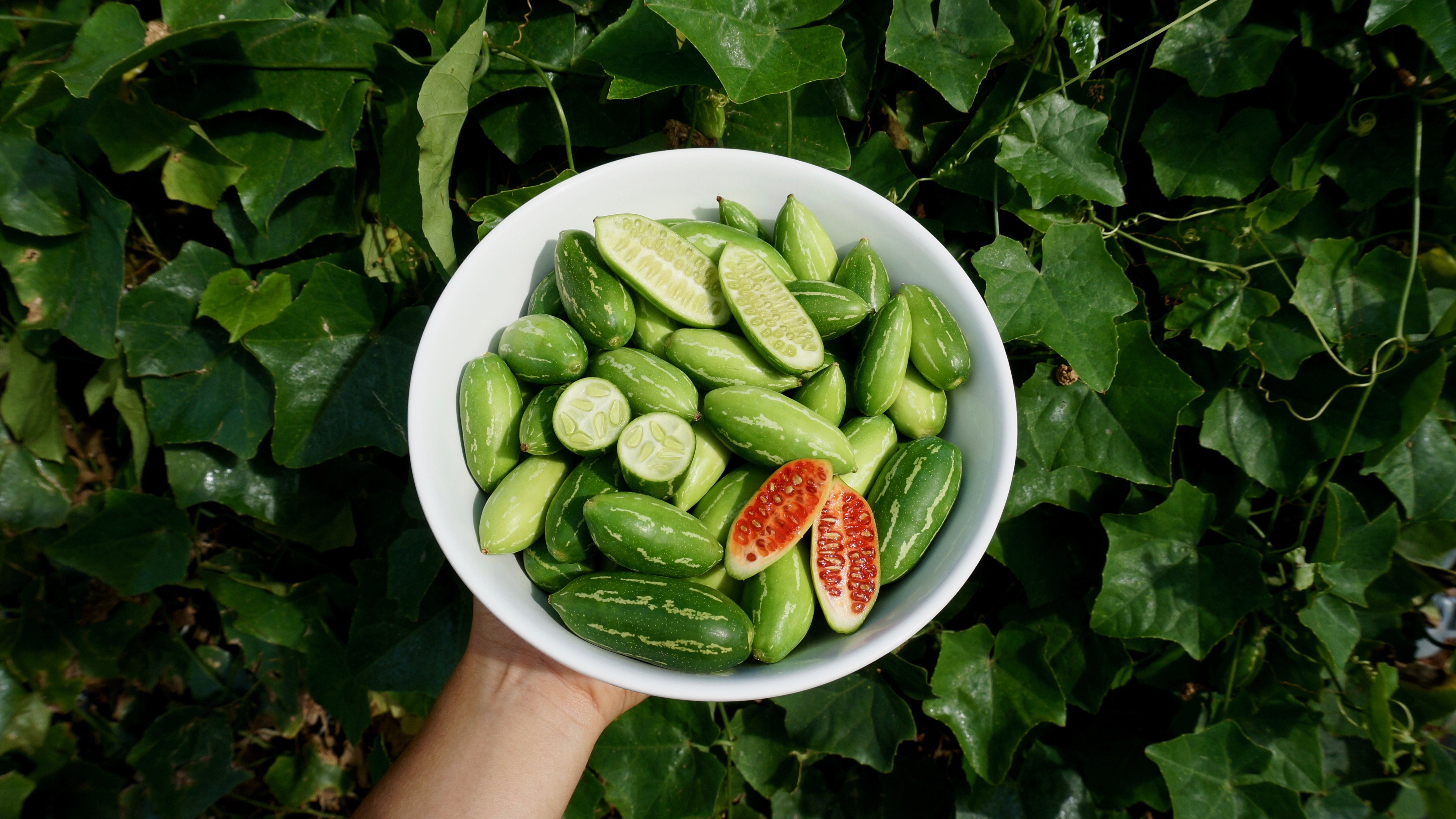
Introducing the Tindora
The tindora is a tropical vining plant that produces small fruit. The fruit can be eaten both while immature and mature. It belongs to the Cucurbitaceae family, which is also called “the gourd family.” The gourd family includes species like pumpkins, melons, and cucumbers. The tindora is also known as ivy gourd and it is native to Africa and Asia. In India it is cooked as a vegetable, and because of its culinary uses people have introduced it to new regions. It is a vigorous perennial that readily grows from seed. Due to this, it has naturalized in various warm regions like the Southern U.S. and in some areas it is even considered a noxious weed. The tindora I am growing is a sterile cultivar that does not produce viable seeds, which prevents it from becoming invasive.
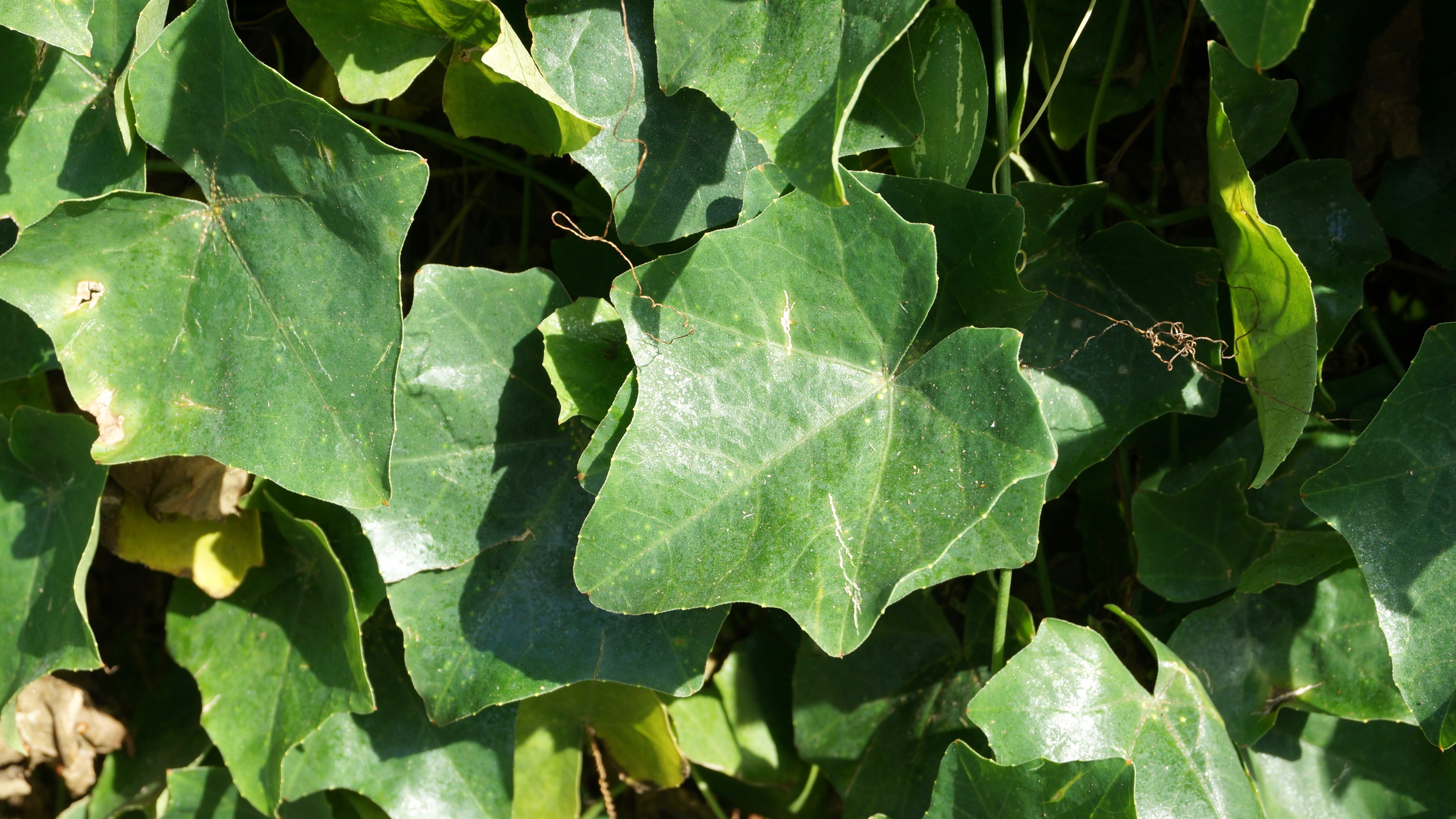
Growth Habit of Vine
The tindora is a vigorous perennial vine that can grow several feet in length. It attaches itself to a support with its tendrils, and if it touches the ground it will eventually root. In tropical regions the vine will be evergreen and grow all year long. The dormant roots can withstand freezing temperatures. In cooler regions it will die down to the ground, enter dormancy, and regrow from its roots when the weather is warmer. The roots resemble a tuber because, overtime, they thicken at the crown of the plant. The leaves have several lobes and are about 4 inches wide.
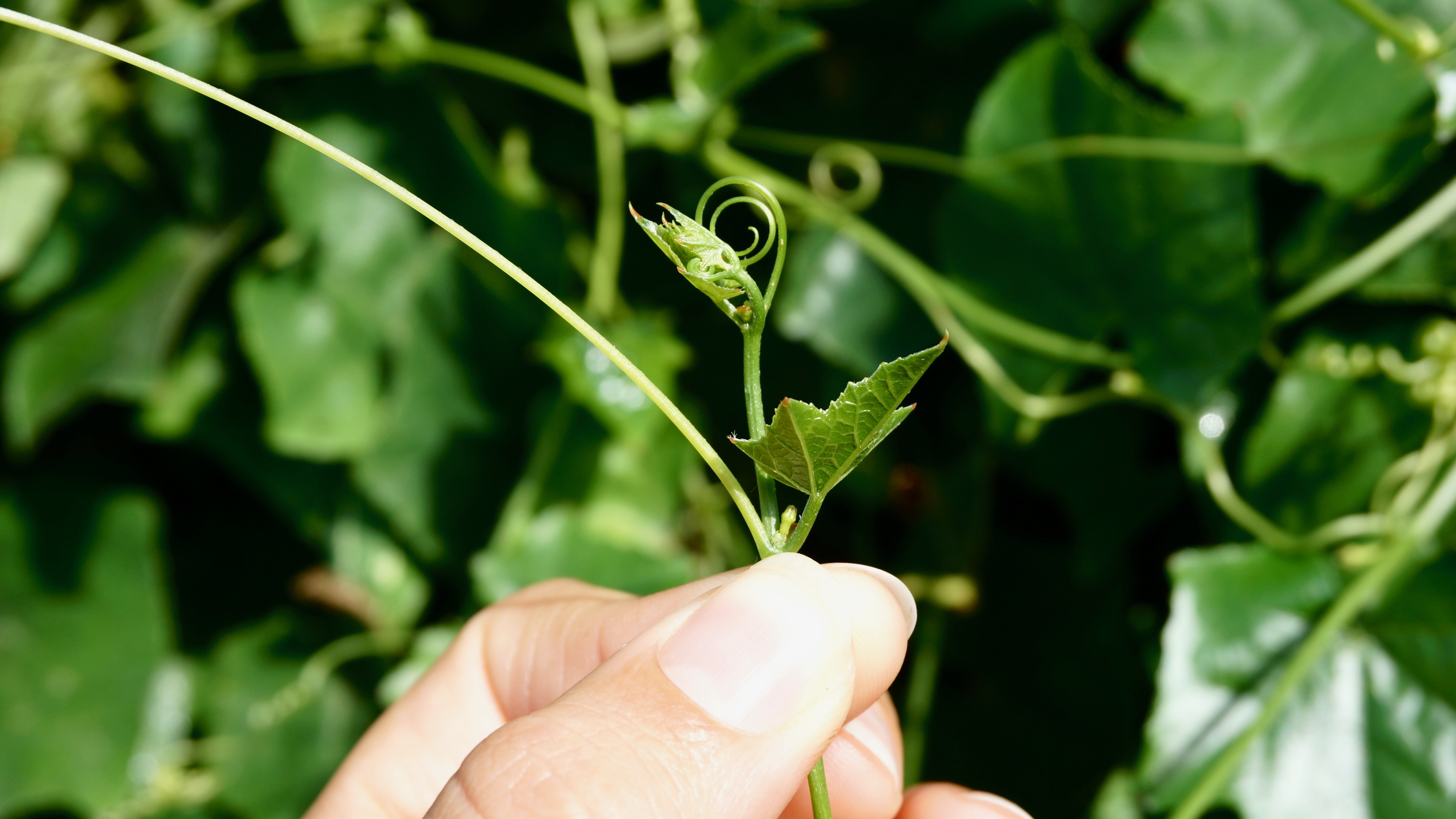
This plant can grow in a variety of conditions. It does well in almost all soil types. It can tolerate some shade, but for maximum production, it is best to grow it in full sun. I haven’t grown it myself in a pot, but I believe it should do well in a large pot since it is so vigorous. Any support can be used, but I wouldn’t recommend using a tree as it can easily shade the tree out. I am growing my tindora on a chain link fence, so it is easy to harvest. I also remove the lower stems that constantly grow at the base of the plant to prevent them from rooting.
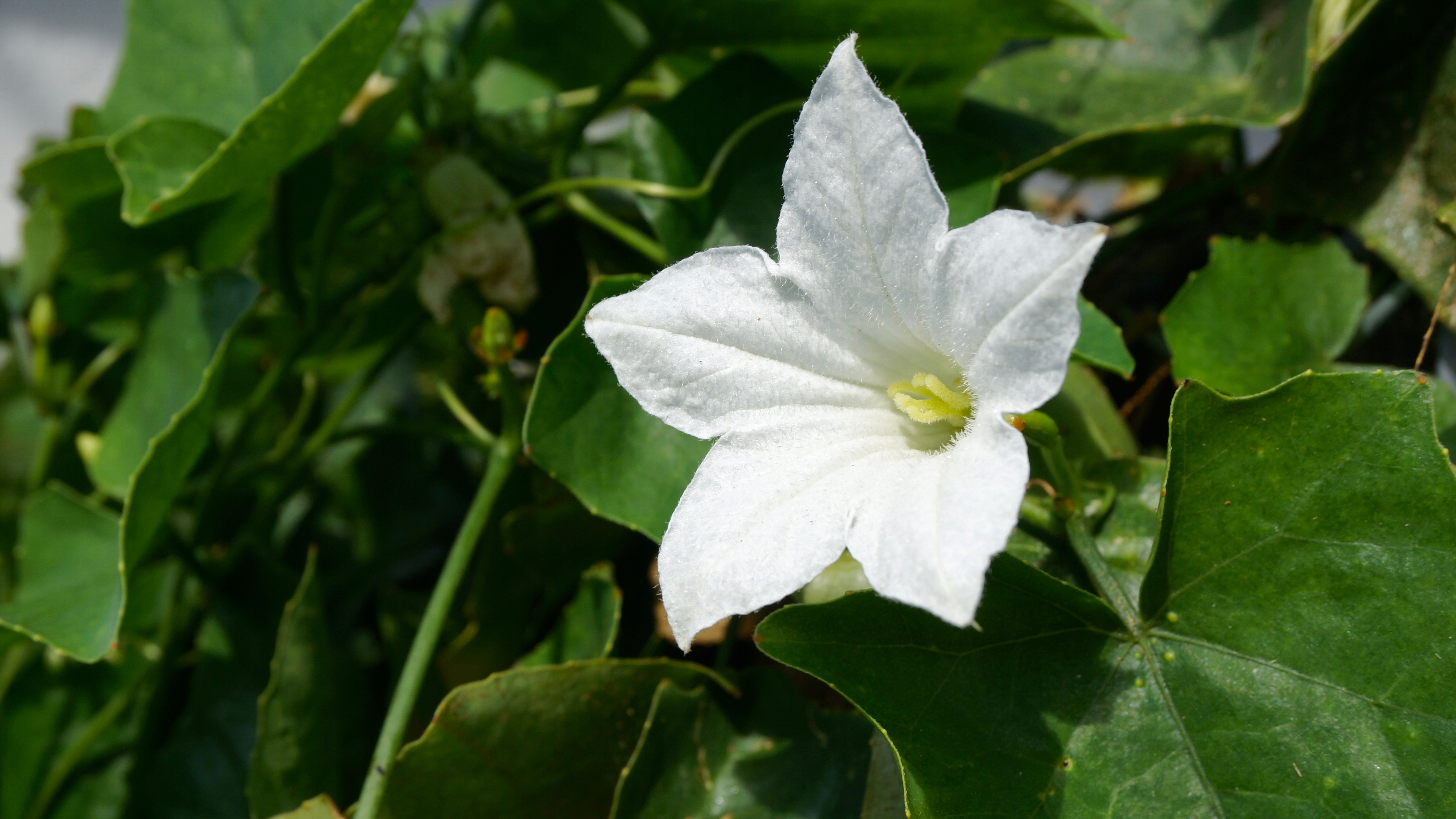
Growth Habit of Fruit
The ornamental white flowers are simple. They open for one day. Male and female flowers grow on separate plants, so a male plant is needed for fruit set. However, with the sterile cultivar only a female plant is needed because the vine produces fruit without pollination. The sterile cultivar does produce seeds that never completely develop, so those seeds cannot grow into a new plant.
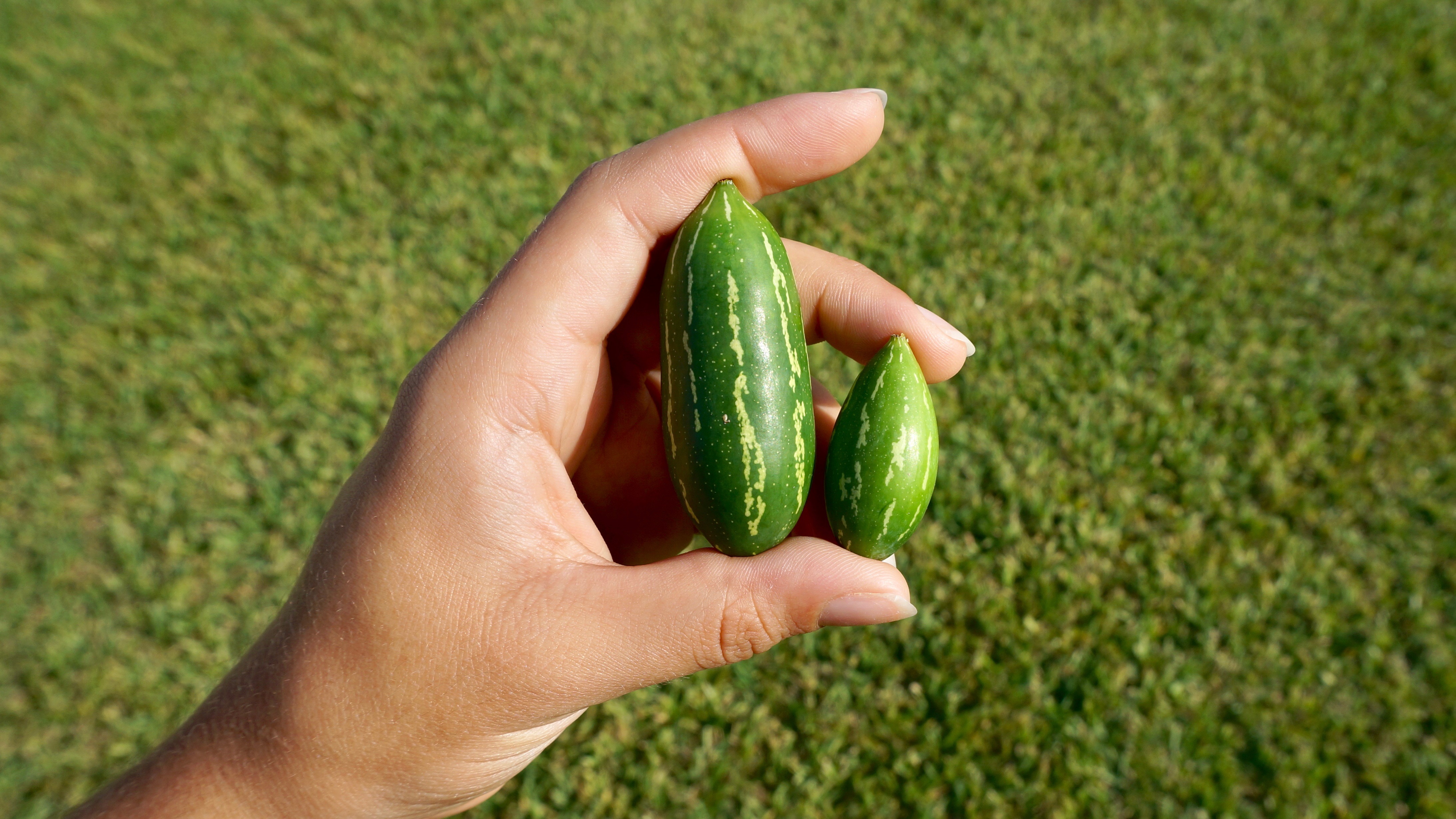
The tindora grows to be around 2 inches long. The vine produces all year long in tropical regions, but production decreases during the colder months. When it is unripe the skin pattern resembles that of a watermelon and the inside of the fruit resembles that of a cucumber. As it matures the fruit begins to ripen and become very soft. The skin and flesh become a bright red color. They ripen from the inside out and from one end to the other.
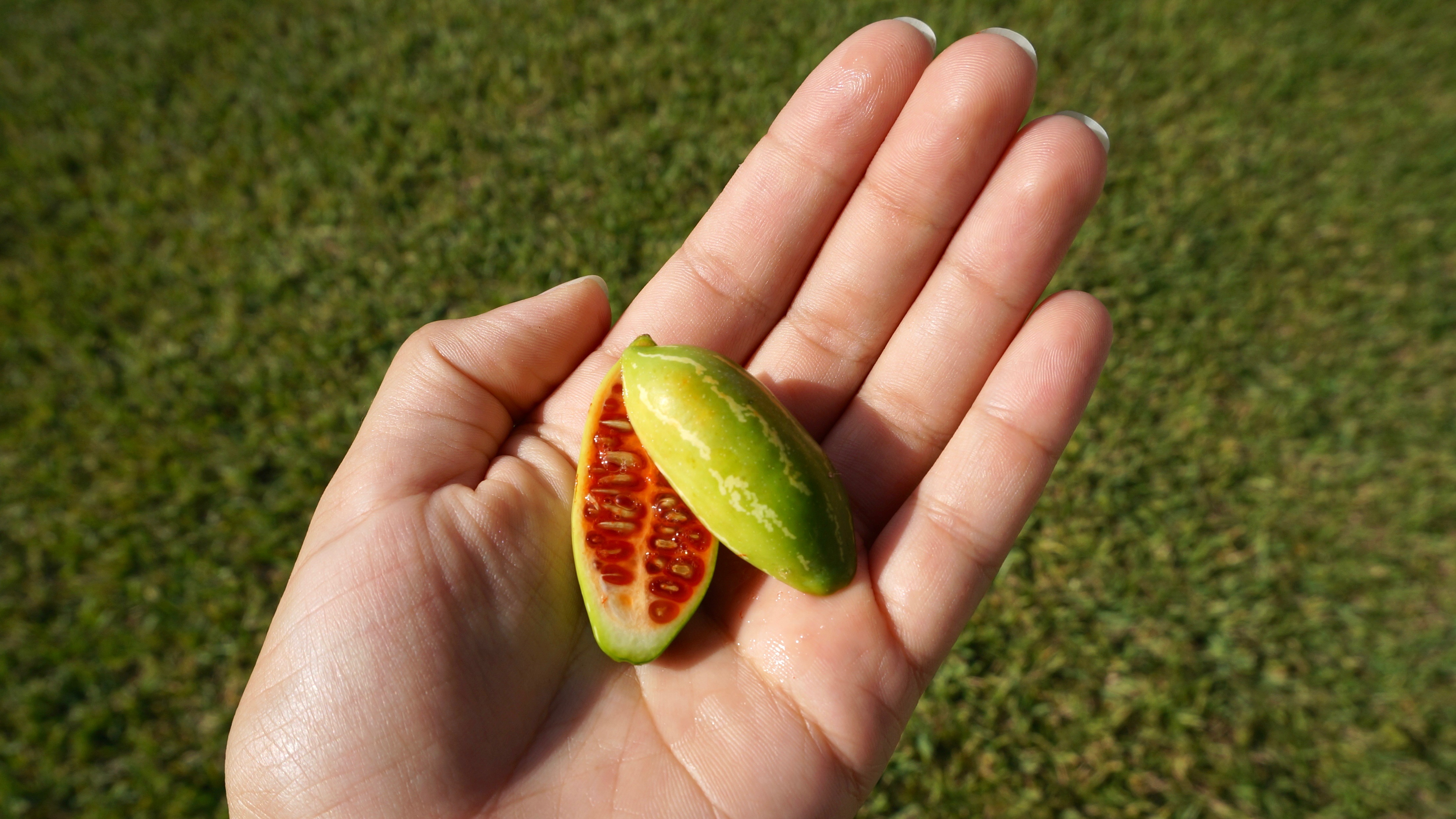
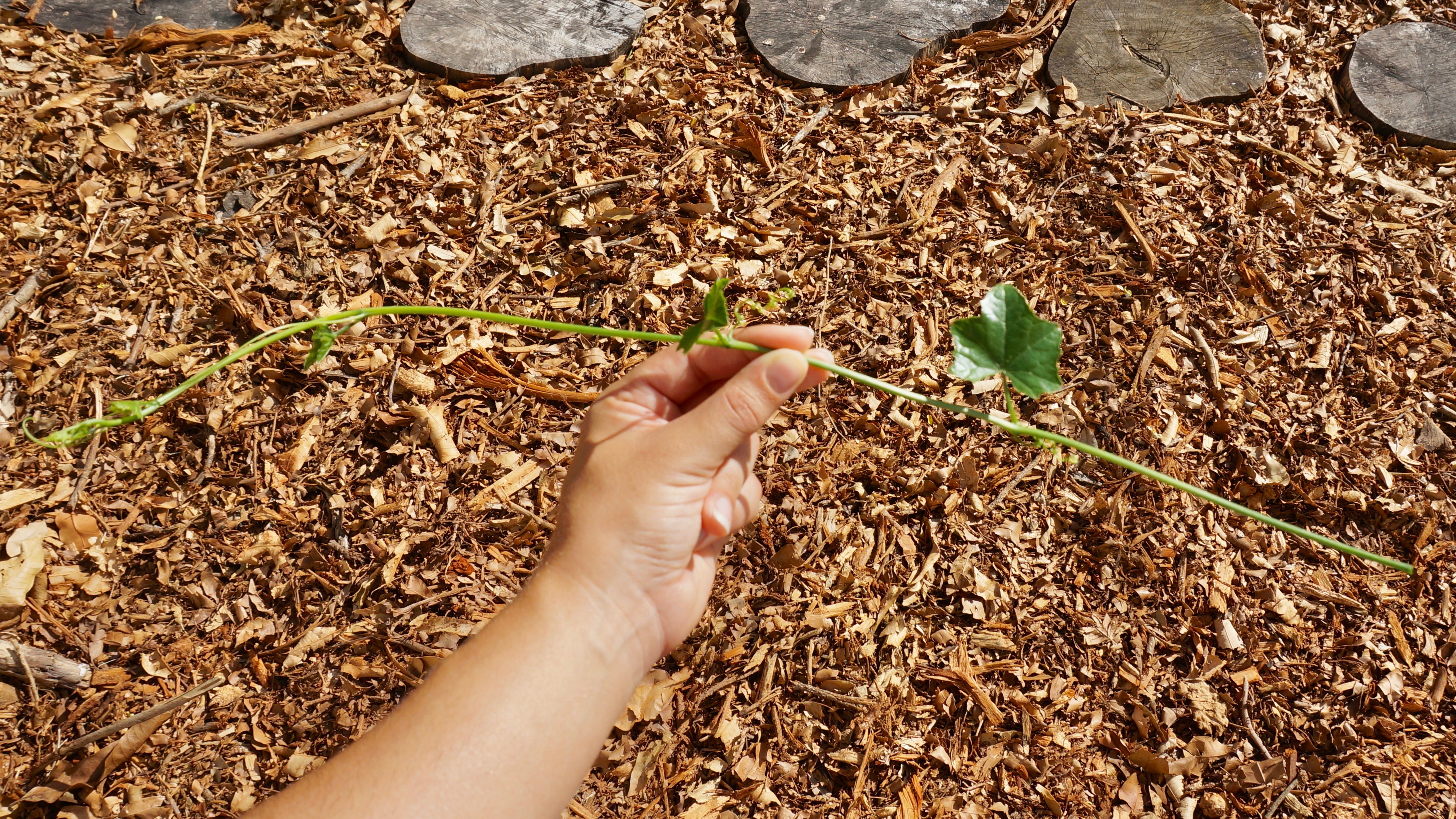
Propagation
The tindora can be propagated various ways. If you are growing a non sterile cultivar they can be propagate by seed. However, it is important to remember that a male plant is required for fruit set. If growing the sterile cultivar then vegetative propagation is the only option. This can easily be done by planting cuttings of the vine. Cuttings from maturing green wood can be used. If cuttings doesn’t work it can be propagated by burying a piece of stem attached to the mother plant in the soil. When the buried stem roots then it can be cut from the mother plant. I believe it can also be propagated by root division, but I am not completely sure how this process is done.
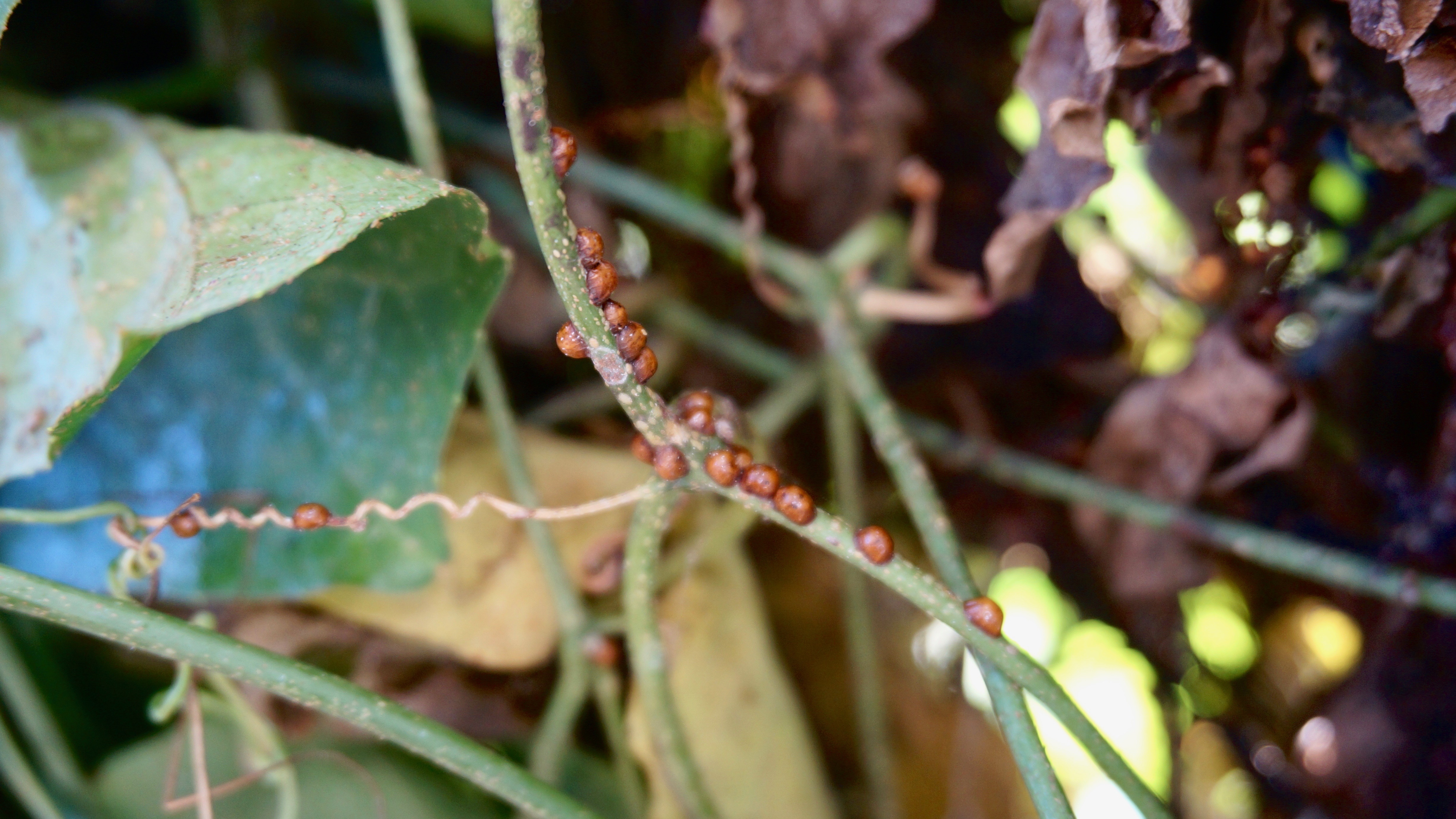
Pests
The tindora is very resilient and does not have many pests. On my vine the only pest I have noticed are aphids. However, this has not caused any significant loss in production. The other pest is birds. They only eat the red ripe fruit. If you are harvesting only green tindoras then the birds shouldn’t be a problem.
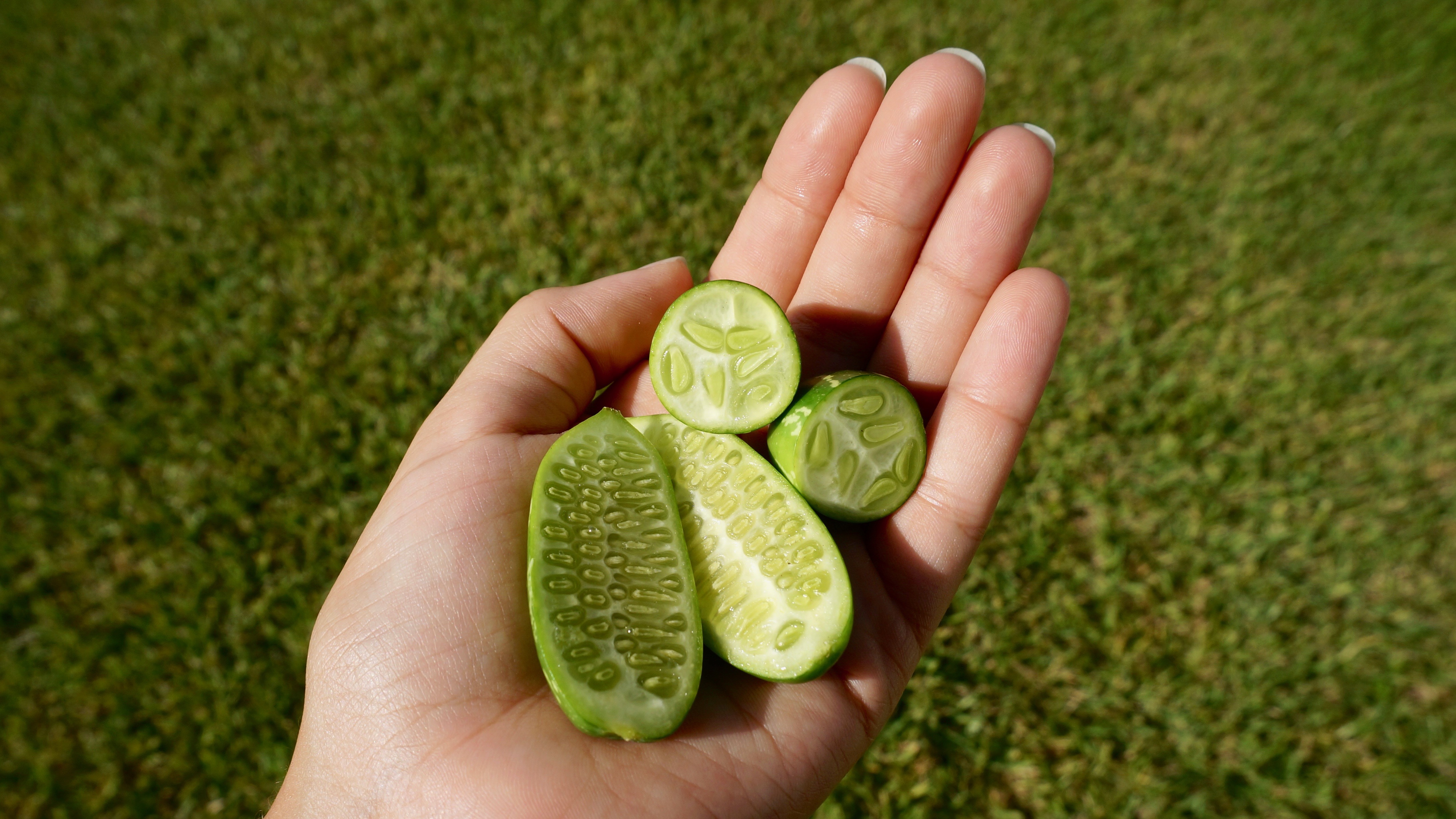
Uses
The tindora can be eaten at any point in its development either raw or cooked. The green tindoras are picked once fully grown, but before they begin to ripen. It can be difficult to tell when this is because the fruit ripens from the inside out. You could harvest a green fruit and cut it open only to find that the inside is already red. The raw green tindoras can be eaten like cucumbers since they have a similar texture and flavor. However, the skin is a bit thicker and the seeds are a bit harder than that of cucumber. Due to this, some might find the raw green tindora unpleasant. To solve this issue the tindora can be cooked. There are many Indian recipes that you can find online that use the green fruit as the main ingredient. The green fruit can also be used to make pickles.
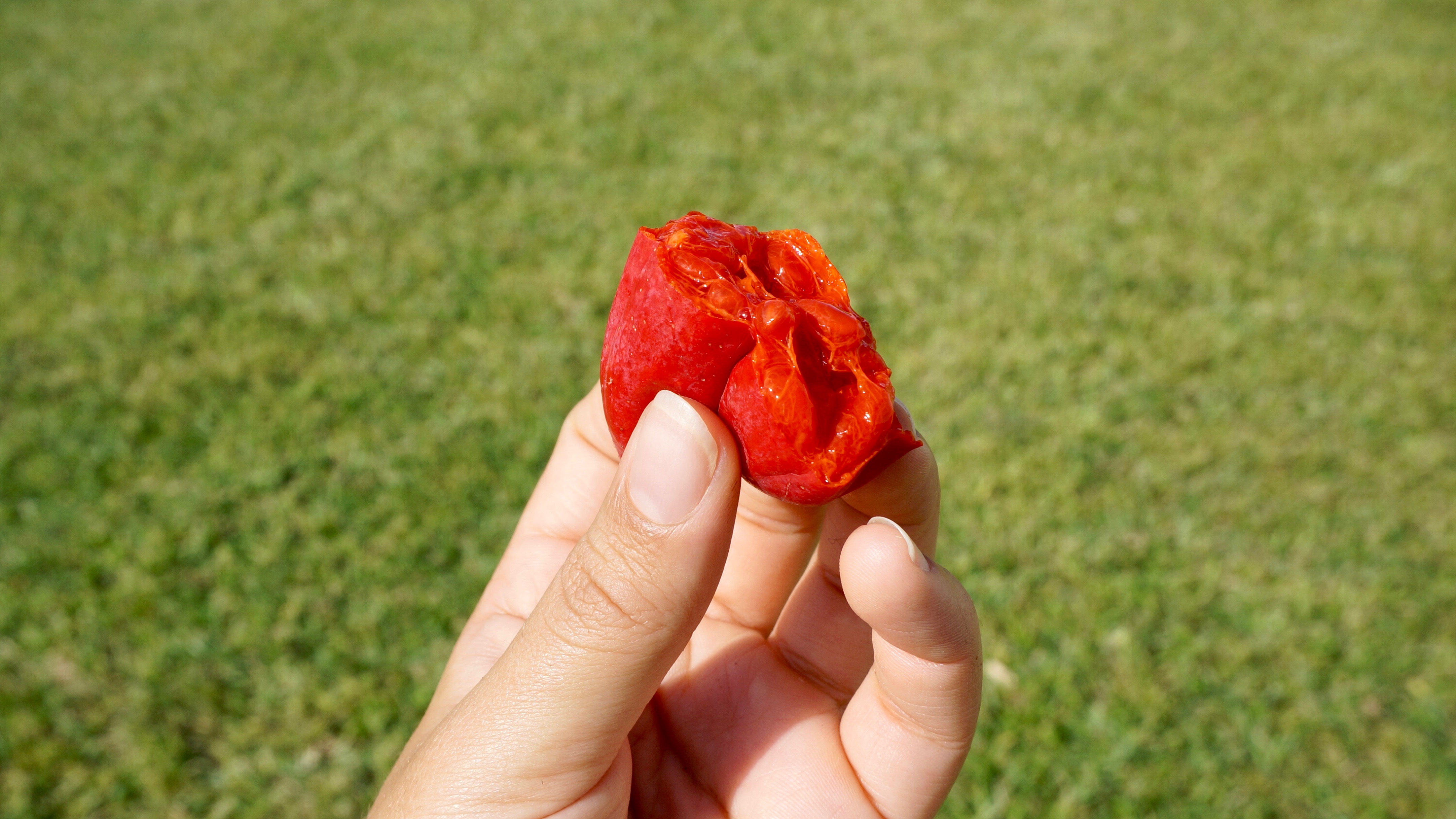
Once the fruit is ripe it becomes very soft, juicy, and mildly sweet. I do not really eat the fruit at this stage, but you might find it enjoyable. It could be added to smoothies, but there might be seed fragments in the smoothie that will need to be strained out. Harvesting the green fruit can be done by simply pulling it off the vine. When harvesting the green fruit the plants sap is released. It is not irritating, however, it can damage clothes. I learned of this because I used my own shirt as a basket while picking the tindoras. After washing the shirt the fabric was ruined after being soaked with the sap. The leaves, young stems, and thick roots are also edible after cooking. I haven’t tried any of these yet.
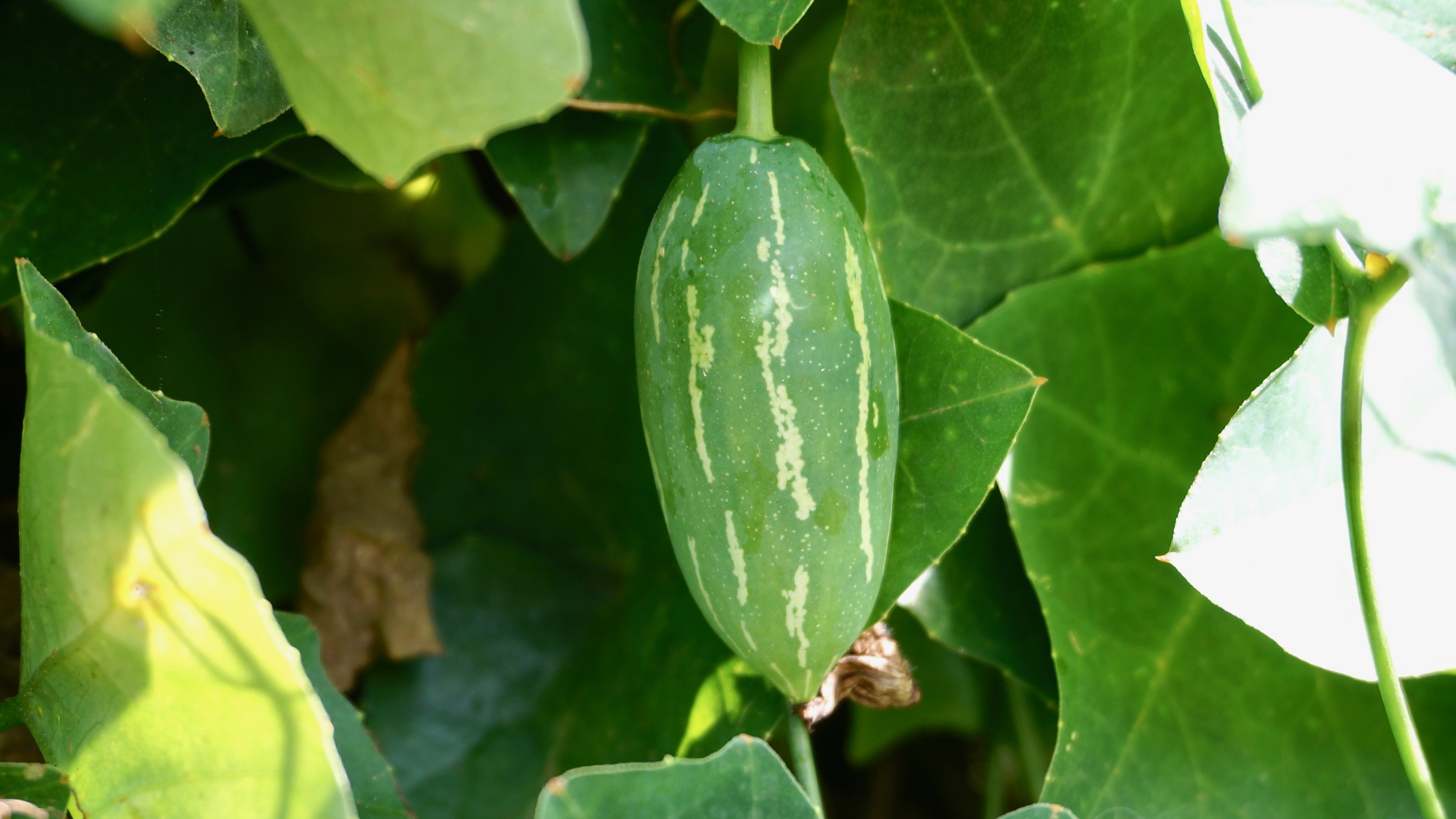
Have you ever eaten tindoras? Do you have your own vine? Do you have any pest issues? Let me know down below in the comments. If you like this post be sure to subscribe, so you don’t miss out on another one!
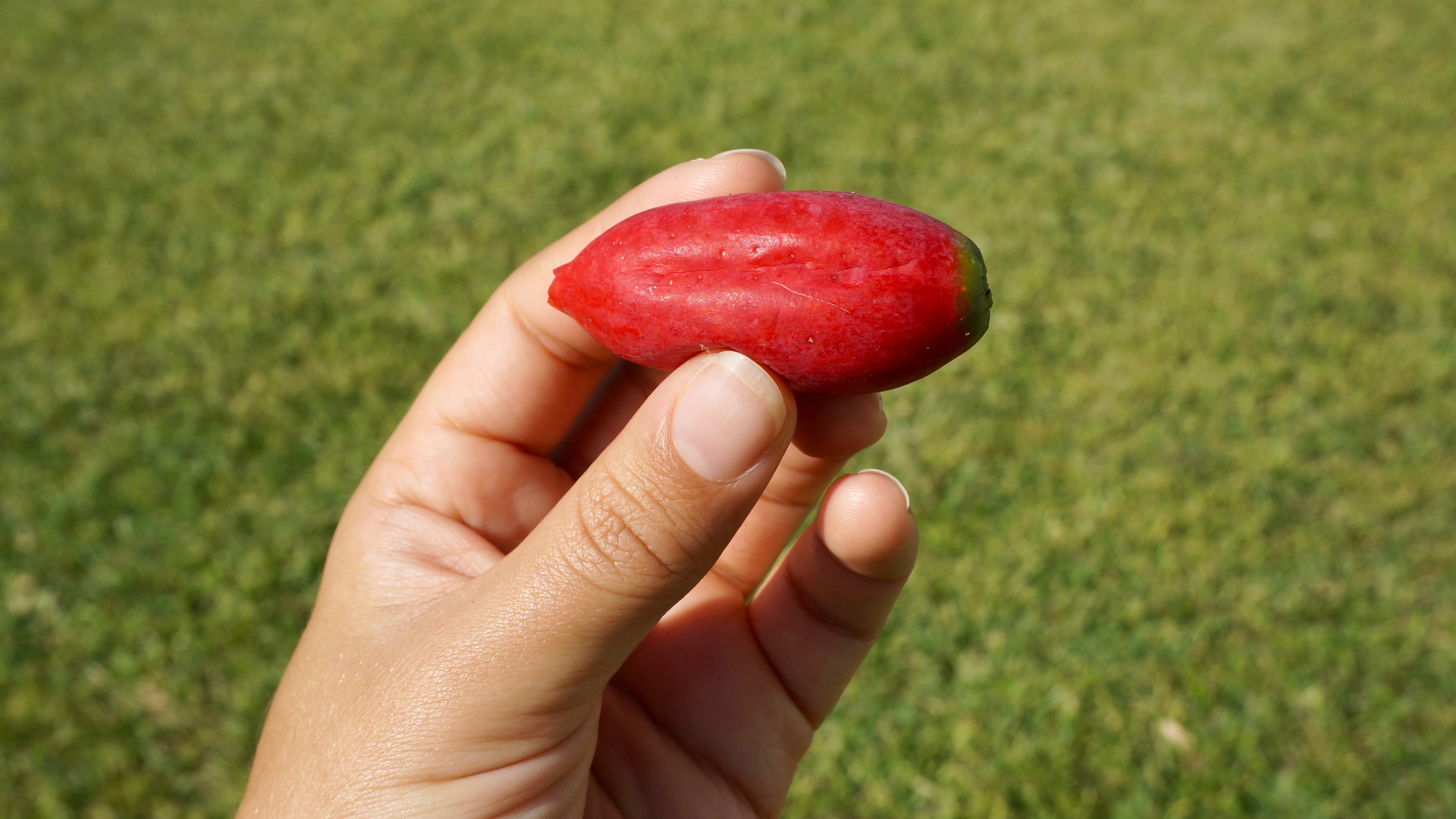
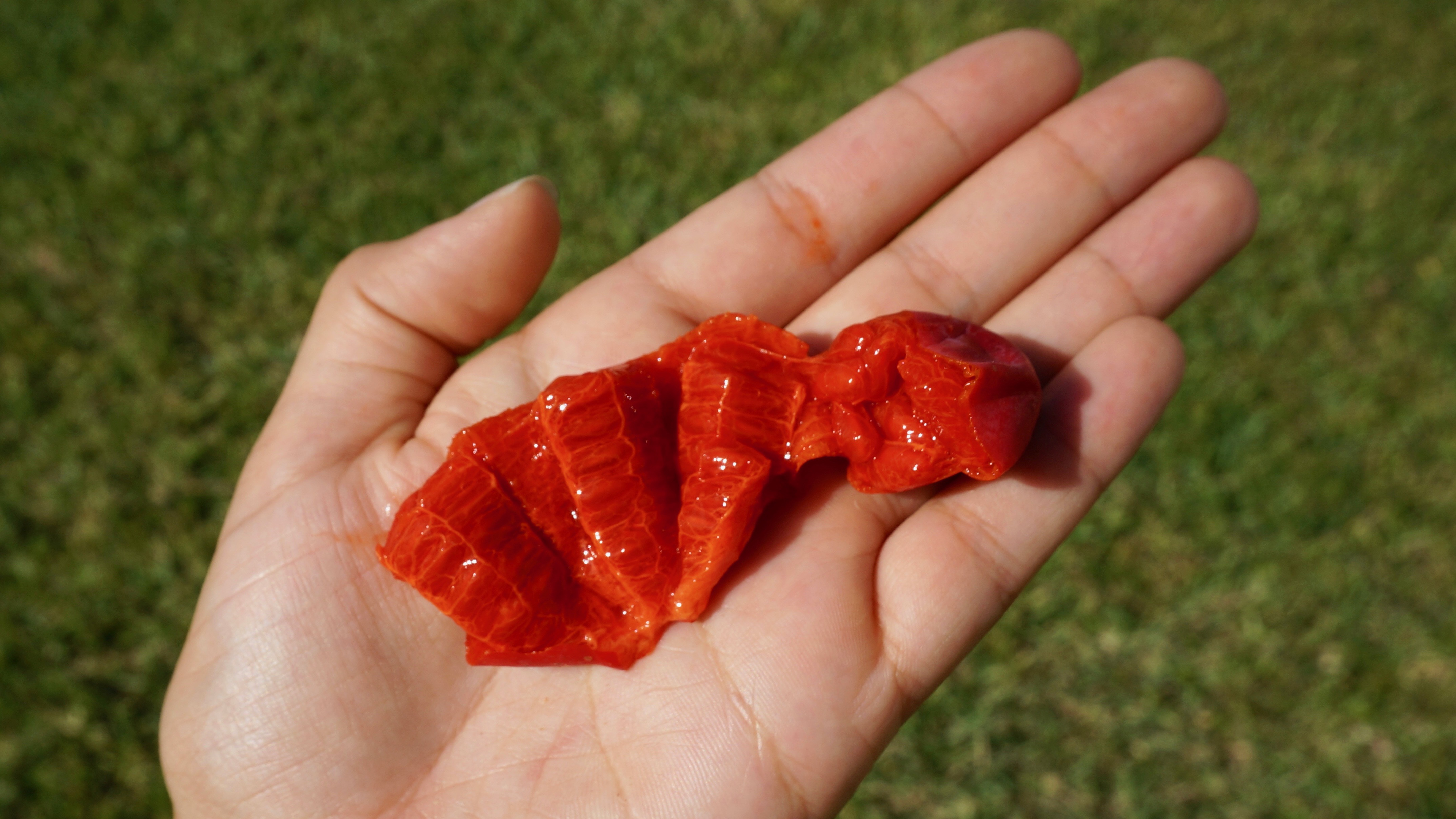
En mi patio creció un bouco y cuando ví ke tenías frutas no sabía ke eran pregunte a persona de campo y no me sabían desir pero empezaron a madurar y bi ke eran muy hermosa pensé ke eran venenosa y la busque en gugle y descubre que eran comestible y los nutrientes que eran eyas crecieron sola y eya misma se extendieron por todos el patio en los alambres delos tendedero de ropa . Gracias por todas las informaciónes que dan ..Dios bendiga..
How deep do the roots go into the ground? Does a planter of 12' depth can sustain a healthy growth?
Are the flowers edible too?
I am of Indian decent and know about this plant. You have done a great job in describing this plant in detail.
I would like to purchase a cutting from you. Please let me know when you have them available.
NJ
Hello, thank you for your kind words. You can purchase a bare-root tindora plant from Our Tropical Soil using this link.
https://ourtropicalsoil.com/product/tindora-bareroot-plant/
I have an old tindora plant which just produces flowers with a small fruit underneath and drops off. I bought a self pollinator this year and both are growing in the same pot . Does this help the old plant to produce fruit. Please advise
Tindora plants are either male or female. The plant you described is a female plant. The small fruit that falls off with the flower is called the ovary of the fruit. That is the part that grows into a fruit if the flower is pollinated. A male plant is also needed for the female flower to set fruit. The bugs will spread the pollen from the male to the female plant. Then every pollinated flower will grow a fruit. I am not sure what you mean about your new plant being self pollinating. Do you mean it produces both male and female flowers on the same plant? The plant I have is a sterile female plant that does not need any pollination to set fruit. So every flower it makes will grow a fruit without pollination. The only way to propagate it is by cuttings. If you plant the seeds they do not grow.
I enjoy reading your post. I live in Memphis, TN. I would love to have cuttings or Ivy Gourd. I will gladly pay the shipping cost. Please let me know.
Thank you! You can purchase a bare-root tindora plant from Our Tropical Soil using this link.
https://ourtropicalsoil.com/product/tindora-bareroot-plant/
At my previous home in southeast Florida I planted 1 tiny tindora given to me by a friend. Within a couple of years it became an invasive monster - rooting vines which established satellite plants all over the place. Another name for the tindora is ‘ivy gourd’. The little cucumber-like fruits are worthwhile. But in my new home I would be careful to plant it only in a pot and never let its vines reach the soil.
Yes they are super aggressive growers. When the vines touch the ground they will root and spread everywhere. You have to keep it very controlled while only letting the vines grow on a trellis. Any part of the vine touching the ground you have to prune. Then they establish deep roots and you have to dig them out in order to remove the plant completely.
Do you have any tindora cuttings to grow ? I have been looking for it for a long time. Thanks
You can purchase a bare-root tindora plant from Our Tropical Soil using this link.
https://ourtropicalsoil.com/product/tindora-bareroot-plant/
Thank you for posting this, I cleaned my yard and i found this fruit in some of the weeds I took out, People in the area said it is a poison and no one eats it, I would go back to the plant and get the fruits so I can taste it. Your post helped a lot. again thank you very much. God bless. Keep safe.
I am glad the post was helpful. Tindora is known to be quite invasive especially when it is a fertile cultivar that can reproduce from seed. The birds eat the ripe red fruits and spread the seeds everywhere. Just triple check the leaves and fruit before eating it and it should be okay. Eattheweeds.com did an article on this post and it would be helpful for you to read it to get a proper ID on the plant. I will include the link to the tindora post he did. http://www.eattheweeds.com/coccinia-grandis-cucumbers-versatile-kin-2/
Hi - could this be grown in zone 6b in summers ? Would it come back ?
Hello, I am not too familiar with growing food in northern climates. I searched up what the low temperature for zone 6b is and it says -5 to 0 degrees Fahrenheit. I think that would be too cold for tindora to come back in the spring. It would have to be heavily mulched and protected to prevent it from freezing in the ground. However, I think you could grow it as an annual. You could plant it in the spring after chance of frost has passed. When it is sunny and warm the plant grow really fast and starts fruiting very fast. Then in the summer or fall, before your first frost arrives, you can take cuttings, root them, and keep them somewhere warm. Then next spring replant. The plant makes a tuber underground and I think you might be able to store this tuber in some moist potting soil over the winter. Then plant the tuber out in the spring. I think the tuber will remain viable a few months like that. I hope this helped! A lot of gardening is about experimentation. Many times you don't really know what will work till you try it out.
Hey Melanie,
Nice article. My plant died this year. I'm trying to get some cutting online. No luck so far.
You can purchase a bare-root tindora plant from Our Tropical Soil using this link.
https://ourtropicalsoil.com/product/tindora-bareroot-plant/
You can purchase a bare-root tindora plant from Our Tropical Soil using this link.
https://ourtropicalsoil.com/product/tindora-bareroot-plant/
I would like to be put on your list to purchase tindora cuttings. Thank you. Great article.
Thank you for your interest. You can purchase a bare-root tindora plant from Our Tropical Soil using this link.
https://ourtropicalsoil.com/product/tindora-bareroot-plant/
Hello, thank you for your interest. I saw that you emailed me so you will be included in the list.
My tindora plant flowered with a tiny build under but never grew into a fruit . What type of plant do I have ? What do u suggest I buy ? Do u sell plant cutting ? I live in NJ
I am not sure what plant you have. If it was grown from seed then it is not a sterile cultivar and might need help with pollination. The one I have is sterile and does not need pollination in order to fruit. Email me if you are interested in some cuttings. ourtropicalsoil@gmail.com
Hi Im interested in the cuttings.
You can purchase a bare-root tindora plant from Our Tropical Soil using this link.
https://ourtropicalsoil.com/product/tindora-bareroot-plant/
383/5000
The tindora can be propagated in different ways. If you grow a non-sterile cultivar, you can multiply it by seed. However, it is important to remember that a male plant is needed for fruit set. If you grow the sterile cultivar, vegetative propagation is the only option. This can easily be done by planting cuttings of the vine.
Bernard, completely correct! The sterile cultivar also has the benefit of setting fruit without a male plant nearby.
I have a female plant but, drops all its fruit. do I need a male plant also. the plant I got this cutting from had fruit.
Hello Andre, from what I understand the tindora bears female and male flowers on separate plants. If you are growing a female plant without a male plant then you will not get any fruit because pollination cannot happen. So yes, I believe you need a male plant also in order for good fruit set. Was the female plant you got the cutting from growing near a male plant?
read your articles with great interest. I have tried to grow tindora (coccinia grandis) plant for 2-3 years from seeds however, they always seem to be females. I am very interested in geeting my hands on one of your sterile tubers. would you be willing to send me one in the post when you dig one up. I would be willing to pay costs. We live in Spain.
I am glad you enjoyed my post!
where can I get ivy gourd sterile cultivar plant
You can purchase a bare-root tindora plant from Our Tropical Soil using this link.
https://ourtropicalsoil.com/product/tindora-bareroot-plant/
do you have tindora plant if yes is this possible to send me I pay for all expanse whatever you invest.
Hello, you can contact me about the plant at my email ourtropicalsoil@gmail.com
Bonjour. Je viens de découvrir cette plante dans des jardins en Haiti. Elle n'y est pas consommée. J'aimerais connaître son nom en créole haïtien. Encore merci pour l'article de qualité.
salut! Merci d'avoir lu je ne parle ni français ni créole. J'utilise Google Traduction. J'espère que vous pouvez comprendre ce que je dis. J'ai cherché en ligne et je n'ai pas trouvé le nom en créole. Je pense que puisque personne ne le mange, il n’ya pas de nom en créole. Vous pouvez l'appeler tindora.
Great profile of this perennial vegetable, which is surprisingly little known in the US. I suspect it could be grown across the Southern US, if mulched to keep the ground from freezing in colder winter areas. Anywhere tindora vines touch ground, they'll make a set of fleshy perennial roots, so this a good one to plant in a location with low escape potential, even the sterile form. It's good to know about the sap staining clothes - sounds like banana sap in that regard.
Thank you! I think it is a great and easy plant to grow. More people should try growing it. Mine has little stems growing from the base of the vine and I have cut them off every now and then. The sap doesn't stain clothes it more just like ruins the cloth.